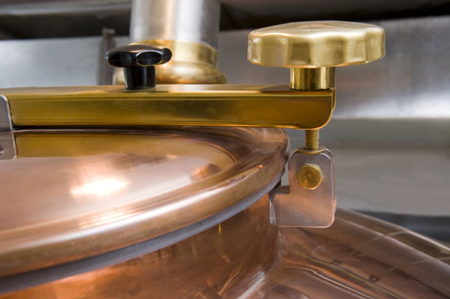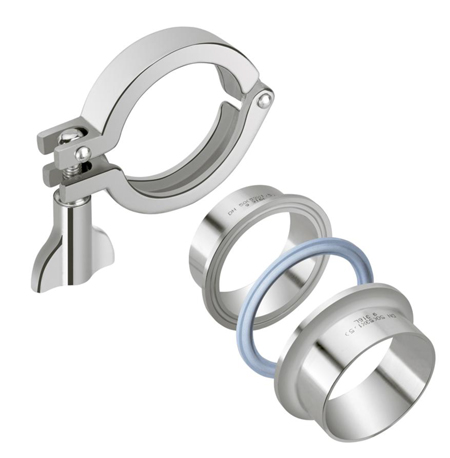Sealing Sense
Gasket manufacturers are frequently asked to provide gaskets that comply with Food and Drug Administration (FDA) regulations. This is a broad and complex area and frequently extends beyond food processing plants to those involved in the making of pharmaceutical products. The information that follows will help explain some of the requirements for FDA compliant gaskets.
What Does “Conforms to FDA Regulations” Mean?
A gasket is considered FDA compliant through three methods:
- GRAS - Materials that are generally regarded as safe (GRAS). Many materials have been used without problems in FDA applications and are listed as GRAS. The use of a food substance gasket may be GRAS either through scientific procedures or, for a substance used in food before 1958, through experience based on common use in food
- Existing FDA Regulations - Some materials are already covered by existing regulations. For example, perfluorocarbon resins and PTFE are found in 21 CFR 177.1550.
- FDA FCN - New materials not covered by either of the above can be submitted to the FDA under an food control notification (FCN).
PTFE Gaskets
PTFE gaskets are probably the most common gasket materials used for FDA applications. Gaskets made entirely from PTFE are covered in 21 CFR 177.1550. Filled PTFE gaskets can be used if the filler or fillers, coloring agents, etc., are considered as GRAS or if the fillers and coloring agents are covered under another regulation. In addition to complying with these requirements, extractable tests are required with maximum limits based on the surface area of the sample.

PTFE gasket on brewery kettle
Some gasket materials, especially “form-in-place” gaskets such as PTFE joint sealant, are supplied with an adhesive strip to make installation easier. The adhesives must conform to 21 CFR 175.105.
Elastomer gaskets
Materials other than PTFE are also used in FDA applications. Elastomer (rubber) gasket materials can conform to FDA regulations and are used in many flat-faced flanges in which the available compressive load is low. Since compounds can be created from most elastomer types—such as NBR, SBR and EPDM—finding one suited for the media contained in the system is possible.
Gaskets made from elastomers are covered under 21 CFR 177.2600. This comprehensive section lists acceptable elastomers, along with acceptable fillers, processing agents, additives and curative systems. It also details the acceptable levels for each component. Extraction tests and limits are specified, and the test fluids are based on the intended service. For example, different extractions tests are done for fatty- versus aqueous-based food service.
Adhesives Used with the Gasket Material
As mentioned previously, some gasketing products may also include an adhesive used as an assembly aid. While there is no real “sealing function” performed by such adhesives, since they are used primarily to secure the gasket into position prior to assembly, these adhesives must also meet certain requirements mandated by the FDA. An example of an adhesive used with PTFE material might be an acrylic that is composed of 2-ethylhexyl acrylate, butyl acrylate, methyl methacrylate and glycerin rosin ether. All four compounds are included in 21 CFR 175.105 as acceptable substances.
Inks Used for Marking the Gasket Sheet or Gaskets
A gasket material may have to be properly identified to provide traceability for the end-user. Frequently, such identification is satisfied by printing the manufacturer's name or brand name and style number on one or both sides of the gasket sheet. Once the sheet has been converted to the specified gasket configuration, this ink may also come into contact with the process media, so it must also meet certain CFR criteria. All ingredients used in the branding ink must be acceptable for direct contact with food and pharmaceutical products in accordance with appropriate sections of 21CFR as set forth below, subject to any restrictions and limitations listed:
All color components used in the ink are specifically listed in Chapter 1, Part 73; Part 74, Subpart A; Part 81; Part 82, Subparts A and B; and/or Chapter 1, Subpart B, Part 178, Subpart D, Section 178.3297 and all applicable cross references.
Gaskets for Sanitary Couplings

Many FDA applications use piping with sanitary couplings (right). Breweries, wineries and dairy product plants would be examples of such industries. These couplings are made to be easily disassembled so that the system can be cleaned. The seals or gaskets used in these couplings are very specialized and are normally made in a specific shape and cross-section to easily conform under the low available compressive load. These seals are made from many materials, including PTFE, elastomers with or without metal inserts and others.
Other Requirements
For applications involving food and pharmaceuticals, other requirements may be needed for compliance beyond those of the FDA, such as those of National Sanitary Foundation (NSF), U.S. Pharmacopeias (USP) and 3A.
For instance, a certification to meet the U.S. Pharacopeia Plastic Class VI Requirement is a frequent request. This requirement is a biological reactivity test whereby samples of the gasket material are tested by implanting them into live animals to confirm that no toxic reactions occur from the material. These tests must be done by approved laboratories recognized by the U.S. Pharmacopeia.
Other countries have also changed many of the regulations specific to direct and indirect contact with foodstuffs and related products. One example is the recent changes in the Official Journal of the European Union Regulation (EC) No 1935/2004 which sets forth the principals for any material or article intended to directly or indirectly contact food. This regulation along with (EC) 2023/2006/EC, which sets forth the principals of good manufacturing practice (GMP) relative to such products, suggests similar practices and concerns as those here in the U.S.
Conclusion
Contact gasket material manufacturers and ask them to provide the required information to qualify a product as suitable for FDA related applications. As noted in this article, such verifications require extensive and complex research and confirmation before a material can be categorized as FDA suitable.
Next Month: How do I determine the financial payback on capital investments to enhance sealing systems MTBR and energy efficiency? We invite your questions on sealing issues and will provide best efforts answers based on FSA publications.

